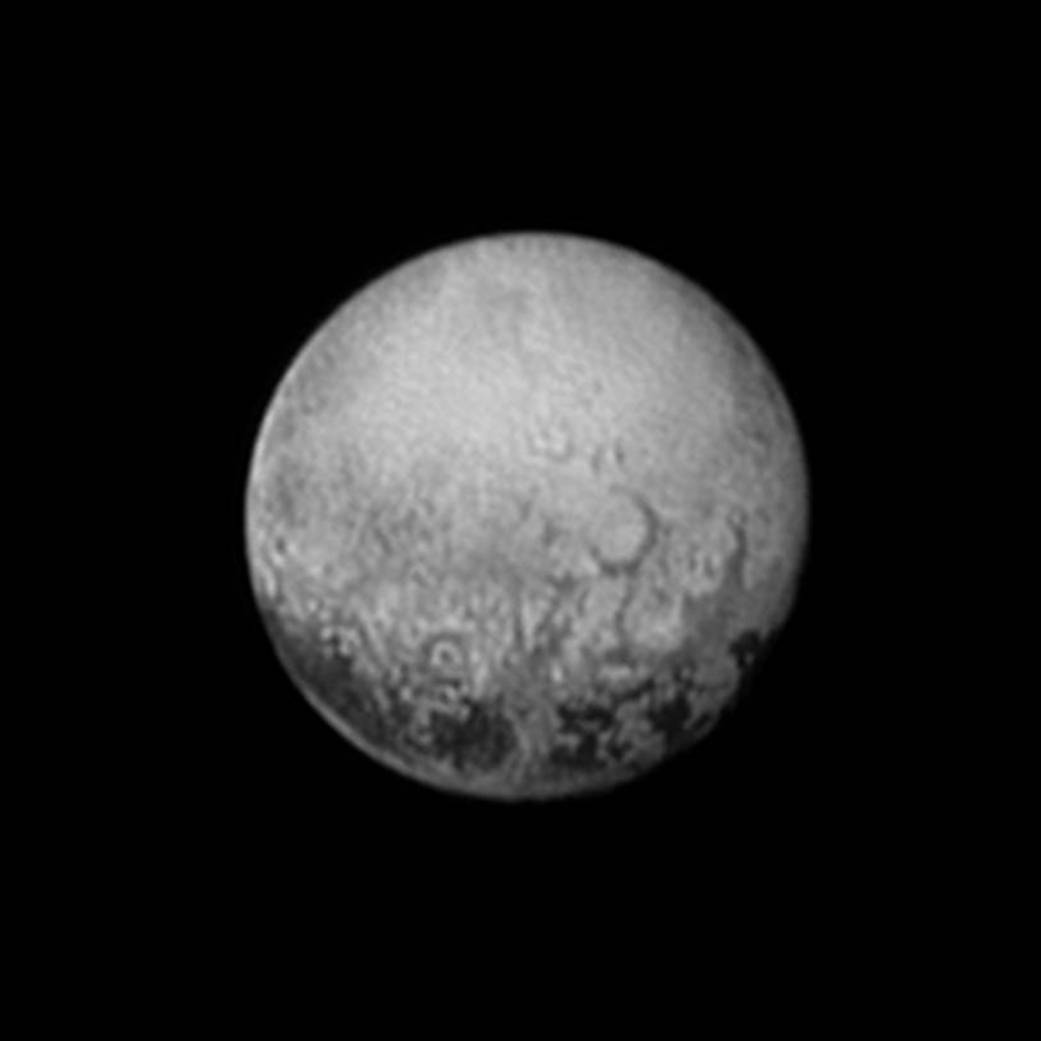Pluto's Four Mysterious Dark Spots Revealed
by Sophia Nasr, @Pharaoness

You are looking at the best image taken to date of the four mysterious spots on Pluto. Alan Stern says this is "the last, best look that anyone will have of Pluto’s far side for decades to come" since this side of Pluto will be invisible to the New Horizons spacecraft during its close approach on July 14.
The consistency in spacing and size of the spots continue to intrigue. "It’s weird that they’re spaced so regularly," says New Horizons program scientist Curt Niebur at NASA Headquarters in Washington. Jeff Moore of NASA’s Ames Research Center, Mountain View, California, adds that "we can’t tell whether they’re plateaus or plains, or whether they’re brightness variations on a completely smooth surface."
The spots are now estimated to be 480 kilometers (300 miles) across. The latest images also reveal that the dark areas are more complex than earlier images showed. The boundaries between the dark and bright areas are also well defined and irregularly shaped.
The New Horizons Geology, Geophysics and Imaging team will aim to decipher the mystery behind these spots, as well as find impact craters from smaller objects that have impacted Pluto’s surface. "When we combine images like this of the far side with composition and color data the spacecraft has already acquired but not yet sent to Earth, we expect to be able to read the history of this face of Pluto," said Moore.
During its closest approach, New Horizons will be just 12,500 km (7800 miles) from Pluto’s surface on the side opposite the spots, where the large heart-shaped marking appears. It is interesting to note that the spots appear on the side of Pluto that is tidally locked to Charon, and not on its opposite side.
Now just 3 million km (1.9 million miles) from the dwarf planet, New Horizons will arrive at its closest approach to Pluto on July 14 at 7:49 AM EDT with a velocity of 49,600 km/h (30,800 miles/h) with seven instruments that will work on deciphering the mysteries that shroud the dwarf planet. This will be our first ever up-close look at the dwarf planet.
For the original press release, click here.
 Sophia Nasr is an astrophysics student at York University. Actively involved in the astronomical community at York U, she is the President of the Astronomy Club at York University and a member of the team at the York University Observatory. She also is involved in university projects, and holds a position in research on dark matter at York U. Holding scientific outreach dear, Sophia is actively involved in social media outlets such as Facebook, Twitter, and Google Plus, where she shares with the world her passion for the universe and how it works.
Sophia Nasr is an astrophysics student at York University. Actively involved in the astronomical community at York U, she is the President of the Astronomy Club at York University and a member of the team at the York University Observatory. She also is involved in university projects, and holds a position in research on dark matter at York U. Holding scientific outreach dear, Sophia is actively involved in social media outlets such as Facebook, Twitter, and Google Plus, where she shares with the world her passion for the universe and how it works.







